Summer Newsletter 2023
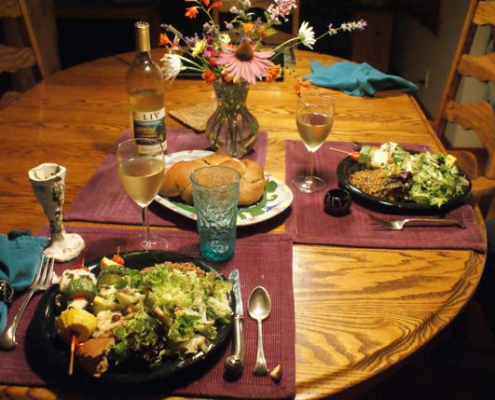
“The world begins at a kitchen table. No matter what, we must eat to live.
The gifts of earth are brought and prepared, set on the table. So it has been since creation, and it will go on.”
— Perhaps the World Ends Here by Joy Harjo
Director’s Report
By Sandy Bishop
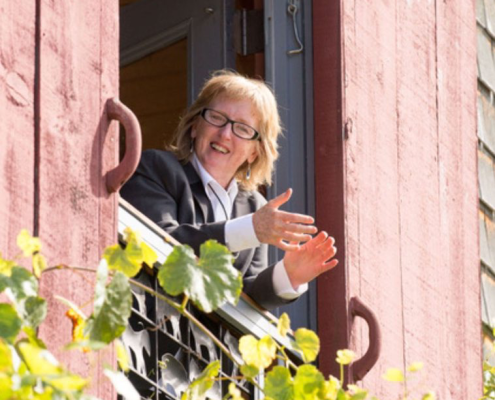
Each summer LCLT produces a newsletter to highlight our Sustainable Agriculture and Rural Development (SARD) program(s), from the bounty and significance of local food to the efforts of farmers.
A couple weeks ago, just after our last late spring rain, a local farm couple called and invited me to walk their fields to experience the regenerative nature of rainfall on the pastures in an otherwise dry year. While walking they highlighted the importance of observation without judgement. In an age where system changes are evident, whether in climate, markets, labor or other forces, a farmer’s keen observation and deep knowledge often serves to guide next steps.
LCLT is looking for additional farmland. If you have a working farm or farmland and would like to see it preserved as a working farm in perpetuity, please let us know. We hope you all enjoy the newsletter, which features local grain and food production, soil regeneration and people who farm the land.
LCLT Grain Project – How Far We’ve Come
Breton Carter, Assistant Director
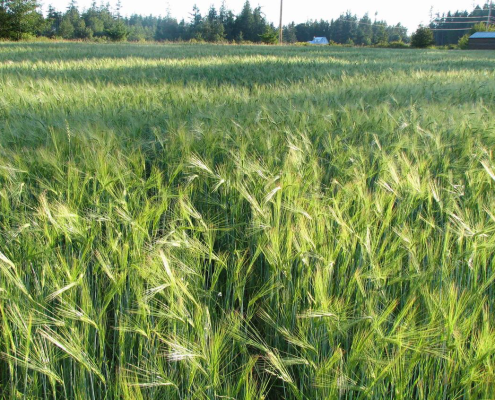
Lopez Wheat
In 2006, LCLT hosted a Food Charrette and asked the question, “What does Lopez Island need for improved food security?” One response was olive oil and the other was grain. In 2009, LCLT embarked on “The Grain Project.” It fit within our founding purposes of land stewardship and sustainable agriculture. We hired OJ Lougheed to further Lopez Island’s basic food security through growing island appropriate grain.
Knowing what kinds of grain to grow was the first piece of the puzzle, which led to a discussion of the need for a seed library, and OJ was versed in both. LCLT partnered with local farmers to trial varieties of wheat. “Fortuna,” a hard, red wheat was selected and continues to be offered for the grain CSA. Fortuna historically has been grown for over 50 years, making it one of the longest-lived wheat varieties in the history of North America.
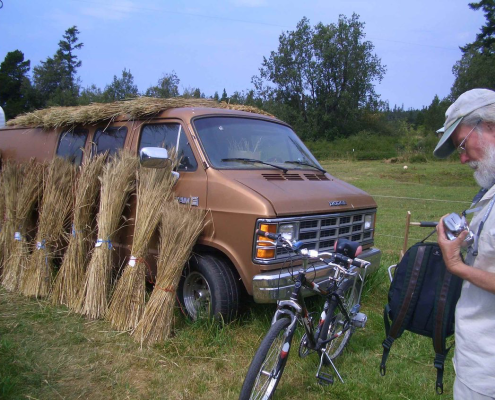
OJ Lougheed and the Van — a Makeshift Wheat Dryer
The next challenge with heritage grains was appropriate equipment. Heritage grain stalks are taller than most modern wheat, and American farm equipment today is designed for the shorter wheat. Steve Lillestol of Island Grist has long been a machinist and tinkerer with a passion for historic equipment. Over the course of the past fifteen plus years, Steve has grown his collection of equipment and now has machinery to harvest, clean, mill and store these shorter heritage grains. He provides this fee-for-service to LCLT and to other island grain growers.
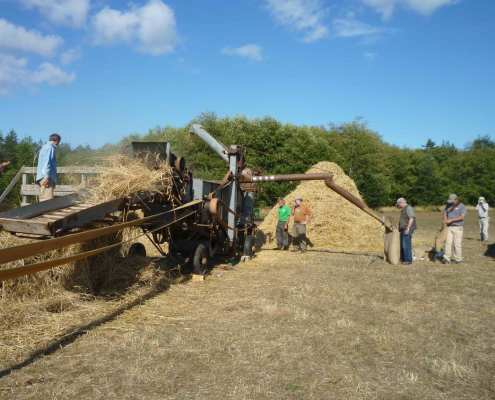
Harvesting Wheat with Steve Lillestol, Peter Currie & Community Members
Since trialing grain in 2009, heritage and locally grown grain has taken off! At the forefront, is Barn Owl Bakery and Heritage Grains, operated by Sage and Nathan Hodges. They grow island grain and use it in their bread, pastries, cookies and crackers, baked in a wood fired oven at their home, farm and bakery. Sage and Nathan moved to Lopez in 2011 and credit the LCLT Grain Project for setting the stage to create a system for local grain. They also recognize the long line of island growers including Stephanie Hylton and Keith Sternberg, the Burts’, Arnotts’, Ritchies’ and Normans’.
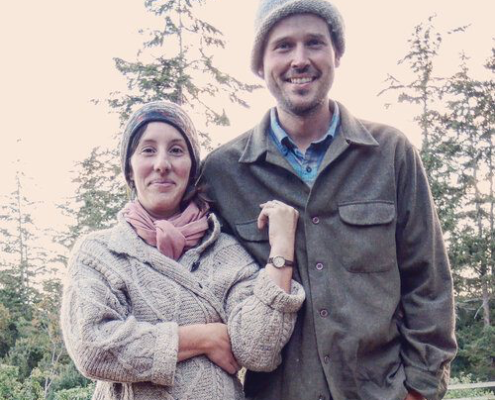
Sage and Nathan Hodges (photo courtesy Barn Owl Bakery)
When LCLT started the Grain Project, “gluten-free” seemed to be labeled on so many products, and people were asking about digestibility. People soon discovered that though they couldn’t eat commercial bread, they could eat locally grown wheat. Sage and Nathan found the same, and wondered, “Is it the variety of grain? The way the grain is grown? The sourdough fermentation process?” They’ve realized “– It’s all of the above!”
Barn Owl Bakery uses Fortuna Wheat in nearly all their products. LCLT and the work that OJ Lougheed did guided Sage and Nathan towards heritage and older grains, as well as emphasizing island food security via seed saving. The couple now plants, harvests, and collects their own seed to replant each year. This improves the success of the grain as it adapts to its particular environment. They have also continued to keep up with grain trialing, and currently have 50 varieties being tested. Why test so much? Sage and Nathan have come to the realization that “diversity is key in resiliency.”
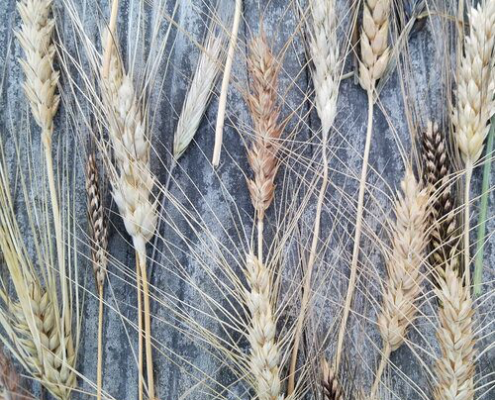
Grain (photo courtesy Barn Owl Bakery)
Today, Sage and Nathan have about 20 acres of wheat in cultivation, and work with local farmers to buy more. They use about 60,000 lbs of grain annually and bake over 40,000 loaves of bread, in addition to pastries and crackers. About 1/3 of their grain, is from island grown whole wheat.
The beauty of Barn Owl Bakery is that they can buy at a much greater scale to support more farmers growing grain.“We’re able to say, ‘we’ll buy the whole field’ to a farmer, providing them more reason to grow wheat.” To this day, over 70% of the world’s food supply is grown by small scale farmers. With food on the table from fields just outside, we can foster healthier local economies and food systems.
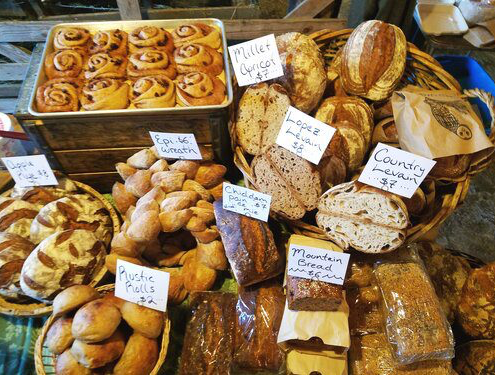
Sourdough Bread and Pastries (photo courtesy Barn Owl Bakery)
Visiting Still Light & Stonecrest Farms
Chom Greacen, LCLT Board Member
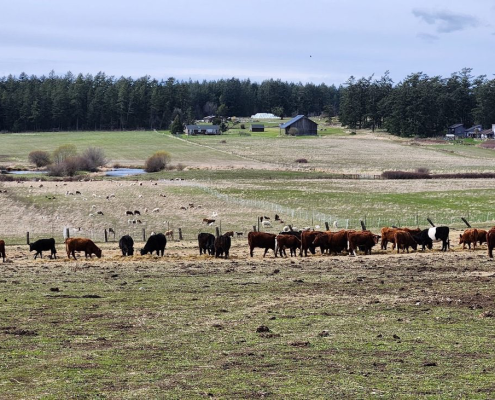
Stonecrest Farm
On a crisp clear spring morning, I joined Rhea Miller, LCLT’s Community Liaison, and other LCLT board members and staff in the new LCLT electric car-share vehicle to tour LCLT’s farms: Stonecrest Farm and Graziers and Still Light Farm.
What remains fresh in my mind is the values that the farmers embody and LCLT has enabled: long-term thinking and deep, caring relationship with the land.
With sparkling eyes, Mike McMahon talked with pride about how he and Kenny Ferrugiaro restored the historic Stonecrest Farm barn plank by careful plank, using locally harvested and milled lumber to exactly match the extra wide dimensions of the originals.
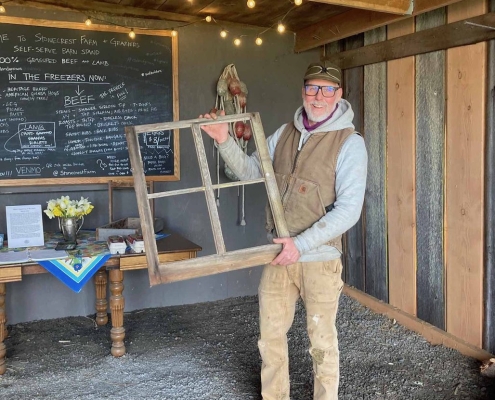
Mike Holding an Original Window
The barn inside under Mike and Meike’s care was almost unrecognizable from how I remembered it years ago: now so clean, fresh smelling of hay and full of light and happy lambs.
As we walked towards the fields, Mike pointed out clovers and peas, among many signs in pasture of the soil slowly gaining in health through their commitment to holistic management, and intensive rotational grazing. Happy soil means happy pasture and happy cattle and sheep.
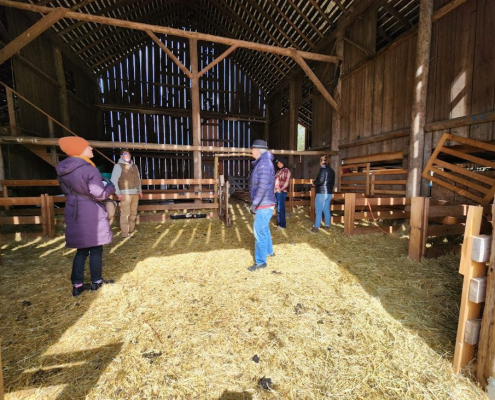
Inside the Newly Rennovated Barn
At Still Light Farm, Lena and Andrew Jones’s hard work on the land was dramatic: millions of degraded pieces of plastic among the brambles were cleaned up. And all was done mostly by hand with no big machinery! It was not out of foolhardiness but rather a deep commitment to healing the land.
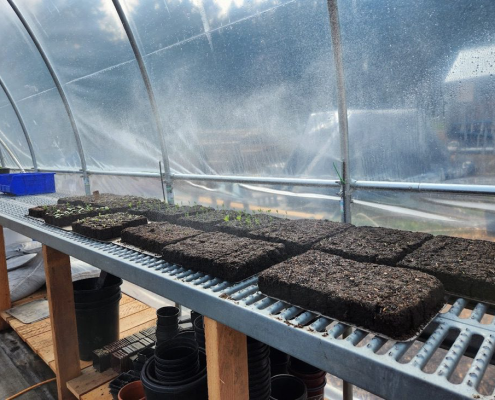
Seedlings at Still Light Farm
On the day of our visit Lena took us around. Manifesting a farm and building a home on a piece of land is a LOT of work, especially with three young children in tow. It was thus striking to me when she casually pointed out that one of the first things they did on the land was to plant native Gary oak trees and camas.
Lena talked excitedly about various experiments she was conducting, from perennial veggie variety selection, composting techniques, to the use of mycelium to turn wood chips into a suitable substrate for starter medium and soil amendments. All with the long-term goal of maximizing nutrient recycling and productive capacity of the land and the soil while minimizing external inputs.
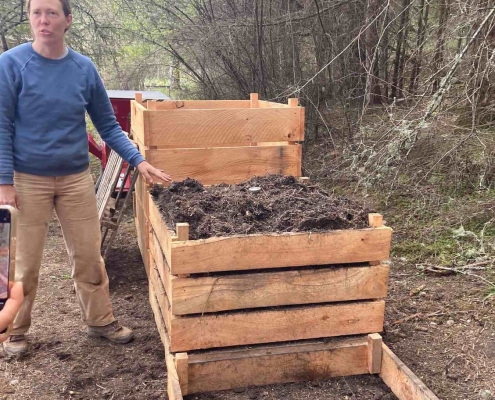
Lena Explaining her Stackable Composting System
The work these farm families leasing LCLT farms are doing reminds me of Wendell Berry’s words:
Invest in the millennium. Plant sequoias.
Say that your main crop is the forest
that you did not plant,
that you will not live to harvest.
Say that the leaves are harvested
when they have rotted into the mold.
Call that profit. Prophesy such returns.
Put your faith in the two inches of humus
that will build under the trees
every thousand years.
In this modern era of high inflation, expectations of quick profits and everything cheap and readymade, the prevailing mode of operation of most corporate farms and businesses tends toward extraction and mass production, with little regards to the long-term effects on the land, and the future generations.
Yet despite the distorted algebra of capitalistic incentives of which Lopez Island is inextricably part of, Mike, Meike, Andrew and Lena chose to toil to re-build soil, restore an aging barn, and plant trees that take decades to mature.
It is not an exaggeration to say that their farming is an optimistic act of hope. Knowing full well the uncertainties that come with changing seasons, prices and climate change, they joyfully plant, build, heal and “invest in the millennium.”
I can’t help taking pride in being part of the LCLT and the land trust model that have enabled them and their long-term relationship with the land and growing local food.
Lopez Island Farm Trust (LIFT)
Stonecrest Farm and Still Light Farm are both part of our LIFT program. LCLT integrated the Lopez Island Farm Trust (LIFT) into our Sustainable Agriculture and Rural Development (SARD) program in May 2017. The primary purpose of LIFT is to hold farms in trust as long-term community assets that contribute to local food security, model carbon sequestration and climate resilient land practices as well as economic opportunities for those who work the land. LIFT focuses on solving some of the biggest issues facing new farmers: secure affordable access to land and infrastructure support. LCLT owns nearly 90 acres of farm and forest land and leases it long-term to the farmers.
Join us in preserving more working farms on Lopez by becoming an LCLT Member, volunteering, and buying local food.
Still Light Farm
Update & Photos by Lena Jones
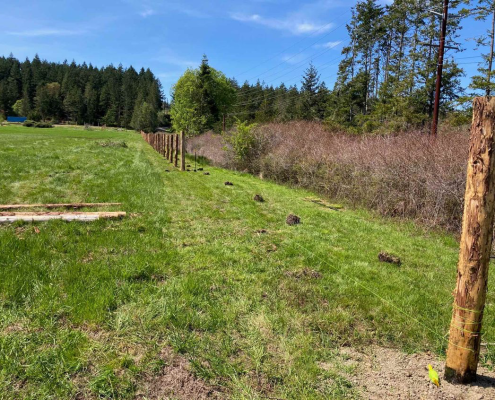
Fence Work in Progress
It’s been a spring of infrastructure. After a winter of clearing fence lines, we finished fencing fourteen acres at the end of May. This deer fence runs around our upper field, future orchard site, and house and barn site, leaving the woods to the deer. It’s been a relief to close the gate and stop covering our plants against deer pressure, which has been intense as they come out of the Lopez Hill woods.
Once the fence was finished, we turned our full attention to the field. The cover crop we sowed last fall came into flower and we turned it back into the soil, using one final tillage to form permanent beds on about one acre. In the process, we picked about thirty-five tractor buckets of rocks out of the fields, including some impressive boulders. Those hard-won beds were immediately planted in trial varieties of pulses, sweet corn, pumpkins, and oats. What a joy to plant all those colorful seeds in the soil and watch their little plants pushing up. We’re growing multiple varieties of most crops and will be looking at how they perform in our soil and growing conditions, how they stand up to disease, pest pressure, and weather patterns, how well they dry down in our marine climate, and of course, how delicious they are.
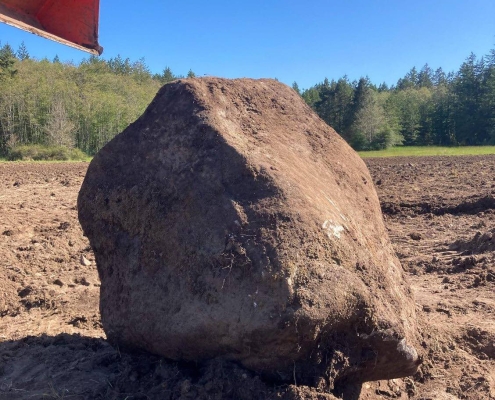
Picking Rocks
We seeded clover in the pathways and are impatiently waiting for the whole field to turn green. Meanwhile, we’re working to install irrigation throughout the farm. The dry spring has required irrigation earlier than we expected, and water is a primary concern. Our crop selection prioritizes varieties that have performed in low-water conditions for summer production, and crops that thrive in the cool wet for fall, winter, and spring production.
Up in the hillside garden, the spring-planted perennials are flourishing. Perennial kale has been the star of the garden this spring. The variety was bred by Chris Homanics, a plant breeder in the Pacific Northwest, and is actually a grex, a genetically diverse mix of seeds. In our forty-foot row, we have plants with purple stems and silver-green leaves, plants with shiny dark green leaves and plants with crinkled edges. They’re all different and all beautiful, growing lush and large with thick, flavorful leaves.
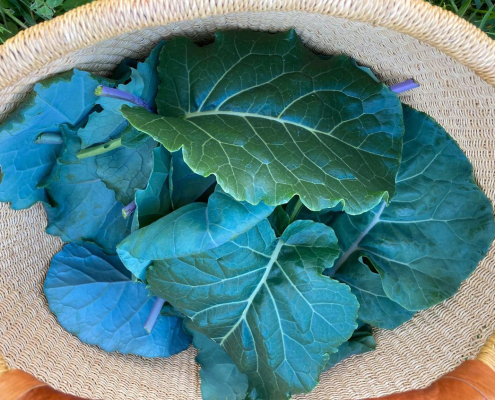
Perennial Kale Harvest
Over the past year, we’ve been steadily seeding the in-between areas of the farm (between and along the driveways, around the water tank, behind the shed) with this and that. We planted a large area on the hillside with native meadow seed from Northwest Meadowscapes last fall, along with nearly one hundred camas bulbs, and it has been blooming all spring. First daffodils, then camas, and now globe gilia and yarrow. We’ve seeded seven different kinds of clover around the farm and clover is everywhere! First crimson clover in a wave of red, then dutch white clover, and now balansa clover, which has a beautiful pink blush. Feels so good to see the farm growing.
SARD Internship
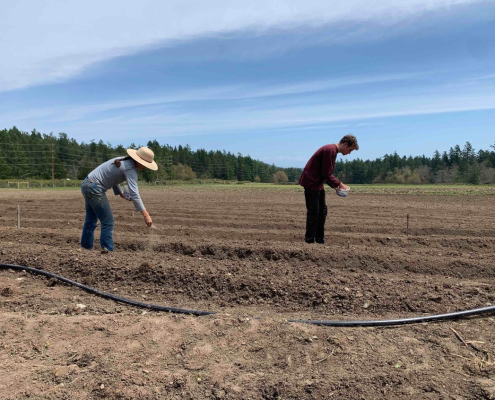
Lena (L) and Owen (R) Seeding Pathways with Clover
We are thrilled to soft-launch our internship program this summer. Owen Gammil is spending the summer learning from Andrew and Lena at Still Light Farm. Stay tuned to hear from Owen this fall, and if you see him on island, be sure to give a warm welcome!
Stonecrest Farm
Update & Photos by Meike Meissner
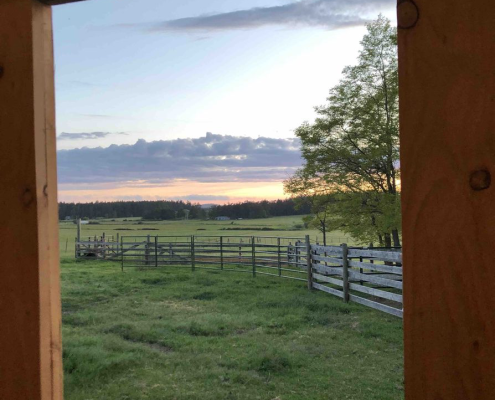
The New Window View from the Barnstand
As we approach the pivot point known as the Summer Solstice, we are taking a deep breath of the rose-scented evening air and reflecting on our five years so far at Stonecrest Farm. Standing in the driveway, looking around the barnyard, we see the new fir boards on the barn as part of the Washington DAHP Heritage Barn Grant restoration project, the yellow color not yet faded by summer sun and winter rains. New windows easily slide open to allow the nesting swallows easy access to their nests and the older roofing metal is now tightly secured with new screws, decreasing the flapping and banging sounds that used to be heard when the winds blow on this hill.
Several thousand feet of irrigation piping bring water to the far reaches of the farm pastures, where a couple of bulls chew their cud, along with two family milk cows and a small group of male sheep. They just finished grazing under the caterpillar-denuded apple trees in the orchard and our dry weather has us moving them quickly through different zones to keep the grass growing as long as possible. Improving animal watering systems has opened grazing on neighboring properties too where water is otherwise unavailable for stock.
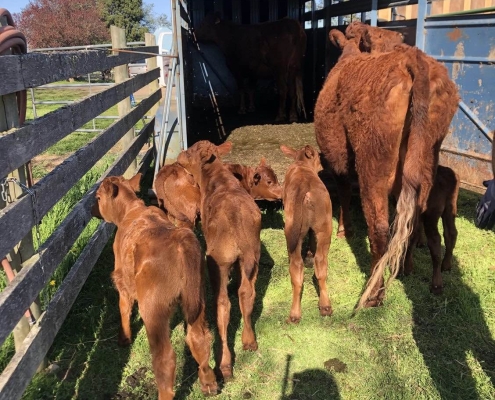
Loading Calves into the Trailer with a Babysitter Cow
In the corral we can see a loading chute that we installed several years ago to help facilitate easy transport of animals to other grazing grounds on the island. Traditionally known as transhumance (based on the Latin for trans ‘across’ and humus ‘ground,’) we use a truck and trailer to move our herds, just as millions of other animals are moved in a seasonal cycle between pastures. This loading chute makes the move out very simple and stress free, especially for the young calves and lambs. This week the sheep flock will be coming back up the hill from Sunnyfield to do some “weed” control in our winter-feeding areas after finishing a grazing rotation that included Sweetbriar Farm and a quick jaunt through hayfields in the Kielhaven neighborhood. It’s always exciting to move animals in the early morning hours before the Lopez rush hour starts!
In an eastern field, where we once had a large group of pigs till up the land and then followed with a planting of mixed grains, we have layer chickens and meat birds moving in rotation. Poultry has always been a background species for us at Stonecrest, mostly keeping our family supplied with eggs and the occasional roast chicken dinner. We have learned the hard way that keeping chickens on Lopez is harder than in Colorado as aerial predation from eagles and the nocturnal tenacity of raccoons are difficult to combat without a loud livestock guardian dog (which the neighbors are grateful we no longer own). A fortified and converted tool trailer provides safe housing for the layers now, and a robust chicken tractor keeps the meat birds mostly safe.
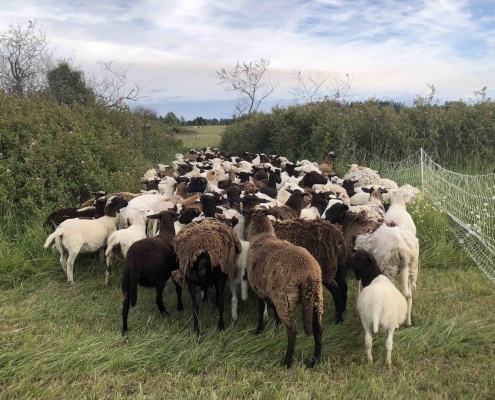
Sheep Moving to New Pasture
Finally, as the evening comes to its close we do our daily pasture “passegiatta,” where we walk through the fields so the dogs can chase rabbits and we can look at how the grasses are growing. This is where we see the most change on the farm, where the impact of hundreds of hooves and countless gallons of urine and manure are making the most difference. Even with this dry spring, the grass is green and growing, the plant diversity continues to increase, and any drop of rain that does fall is quickly absorbed by the living soil. At the end of the day, this is where you will find us, looking at the ground, listening to the chirping calls of the killdeer, and rejoicing in the bounty that is summer on Lopez.
Congratulations Seniors!
We wish to give big congratulations to all graduating seniors, and special mention to Juan Anthony Velasquez, Malachi Cary, Lolo Meissner, Levi McClerran, and Destin Dupuis who grew up in LCLT housing/farms. We asked some of the seniors about their favorite memories at Lopez Community Land Trust. It seems that the trampoline was particularly memorable. Here’s their own words:

“My 4th 5th 6th grade summers were spent with all the friends that lived in the community, building forts in the woods, climbing all over the massive dirt hill that was left from the cement slab that we played on, jumping on trampolines with likely over the recommended weight limit.” – Malachi Cary
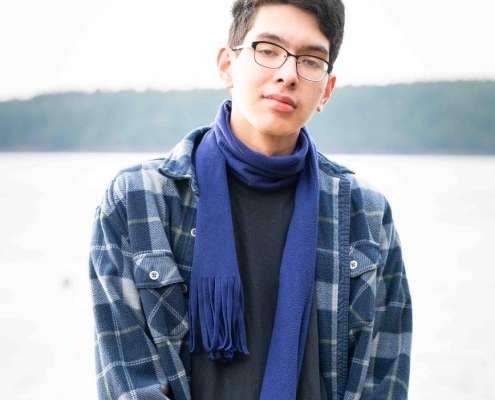
“One of my favorite memories that I have had growing up would be having my trampoline in the front yard. All the other kids would come over and we would all play different games on it. From chasing each other like the game tag, to trying to send someone lying on the floor of the trampoline as high as we could.” – Juan Anthony Velasquez
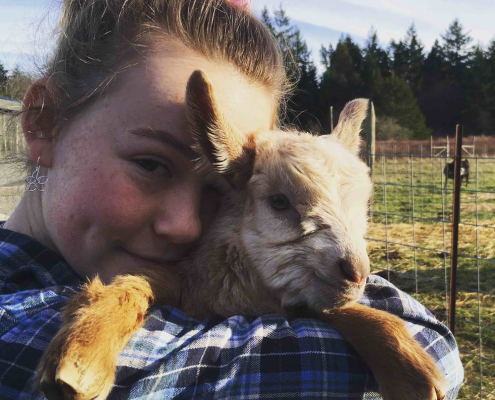
Lolo and her baby goat, Annabeth, born at Stonecrest on January 18, 2019
“One of my favorite things about living at Stonecrest Farm, besides the baby animals, are the sunsets and moonrises. I will always have special memories of climbing up the haystack with my siblings or my cat and watching the incredible display in the sky, it’s like no other place i have ever lived – we always have the best view.” – Lolo Meissner
Join the Board!
LCLT is seeking new board members. If you have knowledge or expertise related to farming, housing, equity and justice, and/or ecological stewardship, and you’re passionate about creating a thriving community, please contact Sandy Bishop, Executive Director, at lclt@rockisland.com
In remembrance:
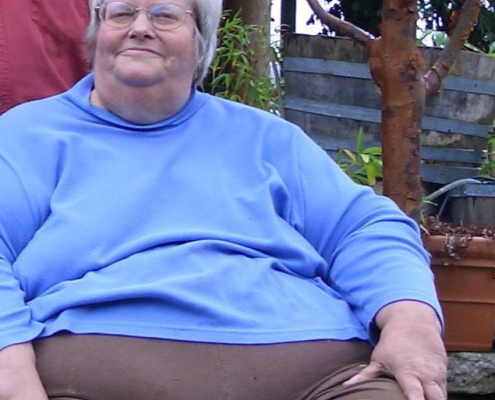
Carol Steckler
2/2/1942 – 4/30/2023
LCLT Founding Member & Long-Time Board Member
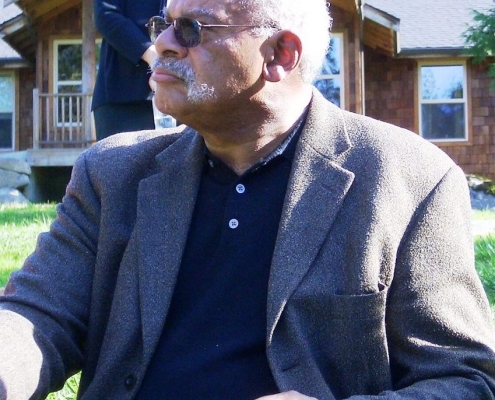
Gus Newport
4/4/1935 – 6/17/2023
Champion of Community Land Trusts, LCLT Mentor & Friend
To learn more about Gus’s life and legacy, visit the link here.
Both Gus and Carol worked toward building Beloved Community, a concept that Martin Luther King Jr. popularized — a society where “caring and compassion drive political policies that support the worldwide elimination of poverty and hunger and all forms of bigotry and violence. At its core, the ‘Beloved Community’ is an engine of reconciliation.”



Transition Lopez Survey
What would a fossil-free public transit system look like on Lopez Island?
If you are a part- or full time resident or short term visitor to Lopez, Transition Lopez Island, in collaboration with the Climate & Sustainability Advisory Committee of the County Council, wants to hear your ideas. Please take a few minutes to give Transition Lopez your thoughts via this 3-4 minute survey. Your future Lopez community thanks you!
Survey Link: https://form.jotform.com/231576219563057
Board of Directors
Quaniqua Williams Chair, Corky Searls Vice Chair, Mark Eames, Secretary, Jan Marshall Treasurer, Chom Greacen and Luis Cisneros.
Staff
Sandy Bishop Executive Director, Breton Carter Assistant Director, Marly Schmidtke Project Coordinator & Administrative Assistant, Rhea Miller Community Liaison
Support
Follow Us
Join Our Mailing List
Contact Us
Address:
PO Box 25
Lopez Island, WA 98261
Phone: (360) 468-3723


